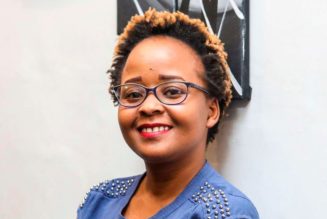Corporate
30 UoN students share one cadaver on biting shortage
Thursday February 23 2023
The University of Nairobi entrance. FILE PHOTO | JEFF ANGOTE | NMG
The University of Nairobi (UoN) is considering reducing the number of medical students due to an acute shortage of cadavers that is threatening the quality of training.
The premier medical training institution says about 30 students are now sharing a cadaver during training, as opposed to the recommended eight in a session.
Some lessons that would last two hours are now taking up to five hours to allow learners a chance to do their practicals.
“We are equally left with no choice but to reduce the number of students we take in for masters in surgery as their training exclusively depends on practicals. Time used in learning has also increased, and medical students are spending at least 250 hours on dissection in their first year,” Dr Paul Odula, the Vice President of the Surgical Society of Kenya told Business Daily in an interview.
Read: UoN sets up foundation in push to raise funds
He said postgraduate surgery students are now sharing cadavers with their undergraduate counterparts, a situation that has greatly affected the outcome of the training offered to the students.
Dr Odula, who is also the acting chairperson of the Human Anatomy department at the UoN said they mainly source the cadavers from the mortuaries which involves a tedious process and many paper works which in turn makes it hard to finally receive the body in a good condition.
“A cadaver is a vital tool for learning anatomy, research, and developing clinical skills, but now that thirty students are sharing a cadaver, it becomes a very risky situation for skill development. Also despite being the cornerstone for learning anatomy, the sourcing, storage, and management of these cadavers remain a big problem in Kenya,” said Dr Odula.
Dr Odula adds that some bodies also get rejected for a number of reasons, including being too thin and therefore not enough to dissect; too fat for the anatomy tables which have weight limits; too tall and for having a large unhealed wound which pours out the embalming fluid.
Over the years, there has been an increasing demand for cadavers in medical institutions with the increase in the surgery postgraduates from 30 to 100 at UoN as well as an increase in the number of students joining other universities for medicine courses.
To this effect, the UoN has resolved to a hybrid method of training by using both physical training and virtual learning, where the students learn through videos of already dissected bodies, as a way of bridging the time gap used for surgical training.
Similarly, the institution has put up a body donation program, which is slowly picking up due to the low awareness of the importance of body donation across the country despite having an active human anatomy bill which is supposed to ease the process of body acquisition as well as enlighten the public about the importance of body donation.
Human Tissue Act No. 34 of 1966, L.N. 358/1966 is an Act of Parliament to make provision with respect to the use of parts of bodies of deceased persons for therapeutic purposes and purposes of medical education and research; and for matters connected therewith and incidental thereto.
Ironically, as the university of Nairobi suffers cadaver shortages, various public mortuaries in the country are milling with unclaimed bodies which end up being disposed of in public cemeteries.
The office of the Governor of Nairobi County last week issued a public notice seeking authority to dispose of 236 unclaimed bodies currently lying at the Nairobi City mortuary and Mama Lucy Hospital mortuary.
Read: UoN seeks debt collector in pursuit of Sh5bn defaults
The cadaver shortage is expected to continue rising with the high demand for doctors, as well as with the many medical schools that equally need the apparatus to conduct training.
Currently, there are 20 medical schools spread across the country, and the number is projected to even increase.









